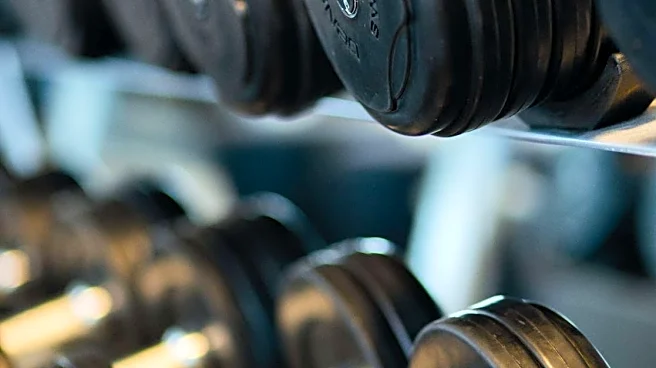What's Happening?
Kate Rowe-Ham, a menopause fitness coach, has shifted her exercise routine from high-intensity interval training (HIIT) and spin classes to a combination of walking and strength training to manage her perimenopause symptoms. After experiencing anxiety, breathlessness, and joint pain, Rowe-Ham discovered that these were linked to perimenopause. She reduced her HIIT classes and incorporated weightlifting and walking into her routine. This change led to significant improvements in her energy levels and a reduction in anxiety and joint pain. Walking, in particular, helped alleviate her hip joint pain by increasing the circulation of synovial fluid, which reduces inflammation.
Why It's Important?
This shift in exercise routine highlights the importance of adapting fitness strategies to accommodate changes in the body due to aging and hormonal shifts. For women experiencing perimenopause, traditional high-intensity workouts may exacerbate symptoms, while a combination of walking and strength training can offer relief and improve overall well-being. This approach not only helps in managing symptoms but also supports muscle growth, stabilizes blood sugar levels, and enhances bone density, which are crucial during menopause. The broader implication is a potential shift in fitness recommendations for middle-aged women, emphasizing the need for personalized exercise regimens that align with hormonal changes.
What's Next?
As more women become aware of the benefits of tailored exercise routines during perimenopause, fitness programs and trainers may increasingly incorporate these strategies into their offerings. This could lead to a broader acceptance and understanding of the need for exercise modifications during different life stages. Additionally, further research may be conducted to explore the specific benefits of walking and strength training for menopausal women, potentially influencing public health guidelines and fitness industry practices.
Beyond the Headlines
The cultural shift towards recognizing and addressing the unique health needs of women during menopause could lead to more inclusive and supportive fitness environments. This development may also encourage more open discussions about menopause and its impact on women's health, reducing stigma and promoting better health outcomes.







